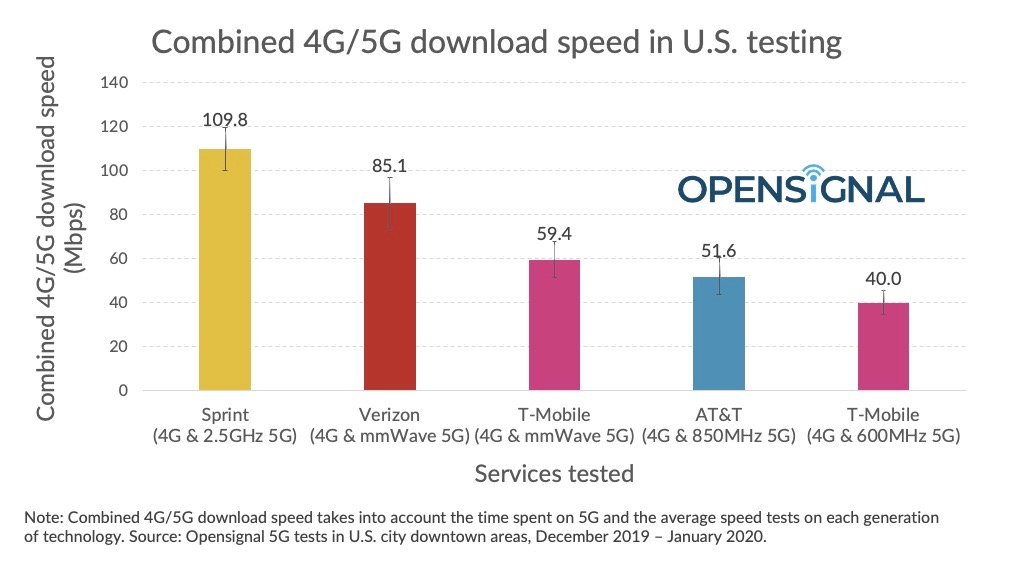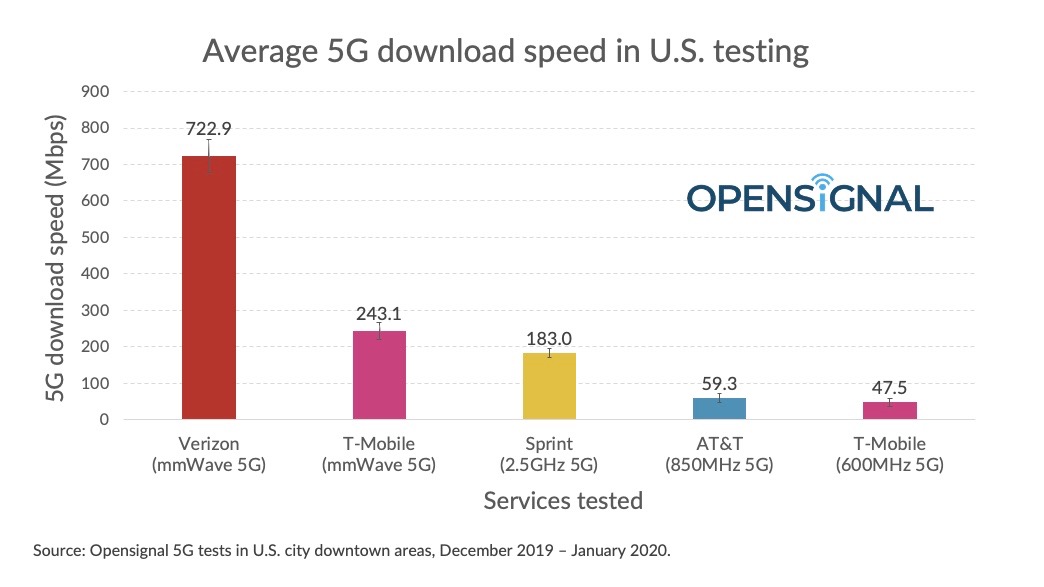5G networks in the US are failing due to a lack of mid-band spectrum, report says
A new Opensignal report shows T-Mobile, Verizon and AT&T ranking poorly for 5G across different metrics.

A new Opensignal report, has revealed how US networks T-Mobile, Verizon and AT&T are letting themselves down with their 5G performance.
Lack of 5G signal
A severe lack of 5G signal was how Verizon ranked badly. Opensignal conducted tests around the downtown areas of cities where US operators had said they had launched their 5G network services. “In our testing, finding a 5G signal often proved challenging,” stated Opensignal. Indeed, during tests Opensignal was only able to connect to a 5G signal on Verizon’s mmWave network just 6% of the time.

Slow 5G download speeds
T-Mobile’s 600 MHz network was the slowest in terms of 5G download speeds, followed closely by AT&T. “AT&T and T-Mobile’s low-band 5G networks clocked average download speeds of 59.3 Mbps and 47.5 Mbps respectively,” wrote Opensignal.

Spectrum availability to blame
High speed and coverage should be at the core of a 5G networks, so why are T-Mobile, Verizon and AT&T all struggling in the US? The Opensignal report says spectrum, or lack of it, is to blame.
"We believe that all U.S. operators will need to complement their holdings with more mid-band spectrum to take advantage of the sweet spot."
Opensignal.
“U.S. carriers’ 5G services are held back by 5G spectrum availability. Without the availability of new 5G mid-band spectrum, U.S. wireless operators have launched 5G services on a variety of spectrum frequencies that they had available, spanning from 600 MHz to 28 GHz. We believe that all U.S. operators will need to complement their holdings with more mid-band spectrum to take advantage of the sweet spot, which 3-6 GHz frequencies provide in the trade-off between low bands’ wide reach and high bands’ super-fast speeds,” wrote Opensignal.
Opensignal’s report, due via a series of manual tests, gives an interesting insight into 5G in the US, which is still very much in its infancy but the long term user experience of 5G phones in the US will be very different when more spectrum is available and 5G is rolled out further.
Dynamic spectrum sharing
The technology still has a long way to go, but mobile operators are aiming to introduce Dynamic Spectrum Sharing later this year.
Get up to speed with 5G, and discover the latest deals, news, and insight!
"This will enable carriers to deploy both 4G and 5G in the same spectrum band, and dynamically allocate that spectrum between the two technologies as needed,” concluded Opensignal, who added that the company also expects to see US operators move to standalone 5G, which will bring ultra-low latency and unlock new use cases for mobile technology.

Rachael is a British journalist with 17 years experience in the publishing industry. Since launching www.digitalcameraworld.com, she’s been freelancing, and working for some of the world’s best-loved websites and magazines including T3.com and TechRadar.com and has also had a book, iPad for Photographers, published. A regular contributor at 5Gradar, Rachael is following the 5G market closely. Find out more at www.rachaelsharpe.com

